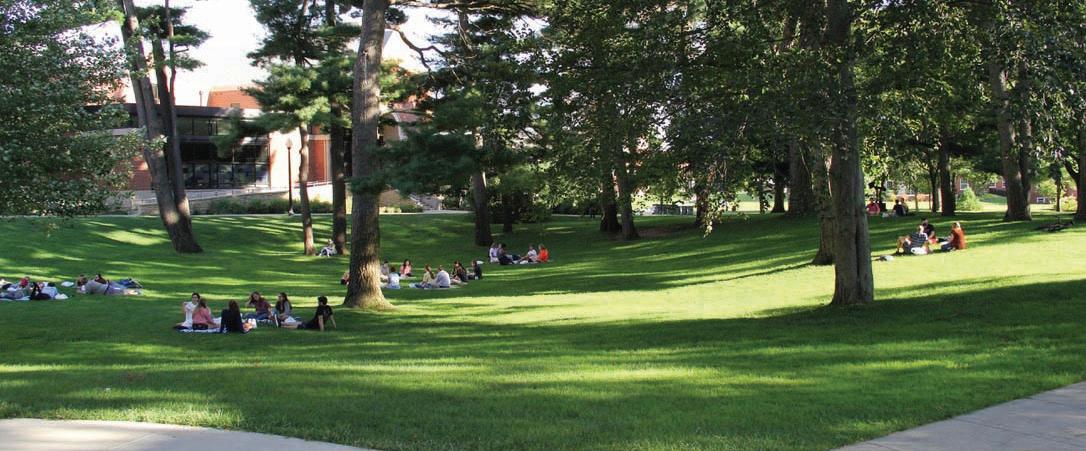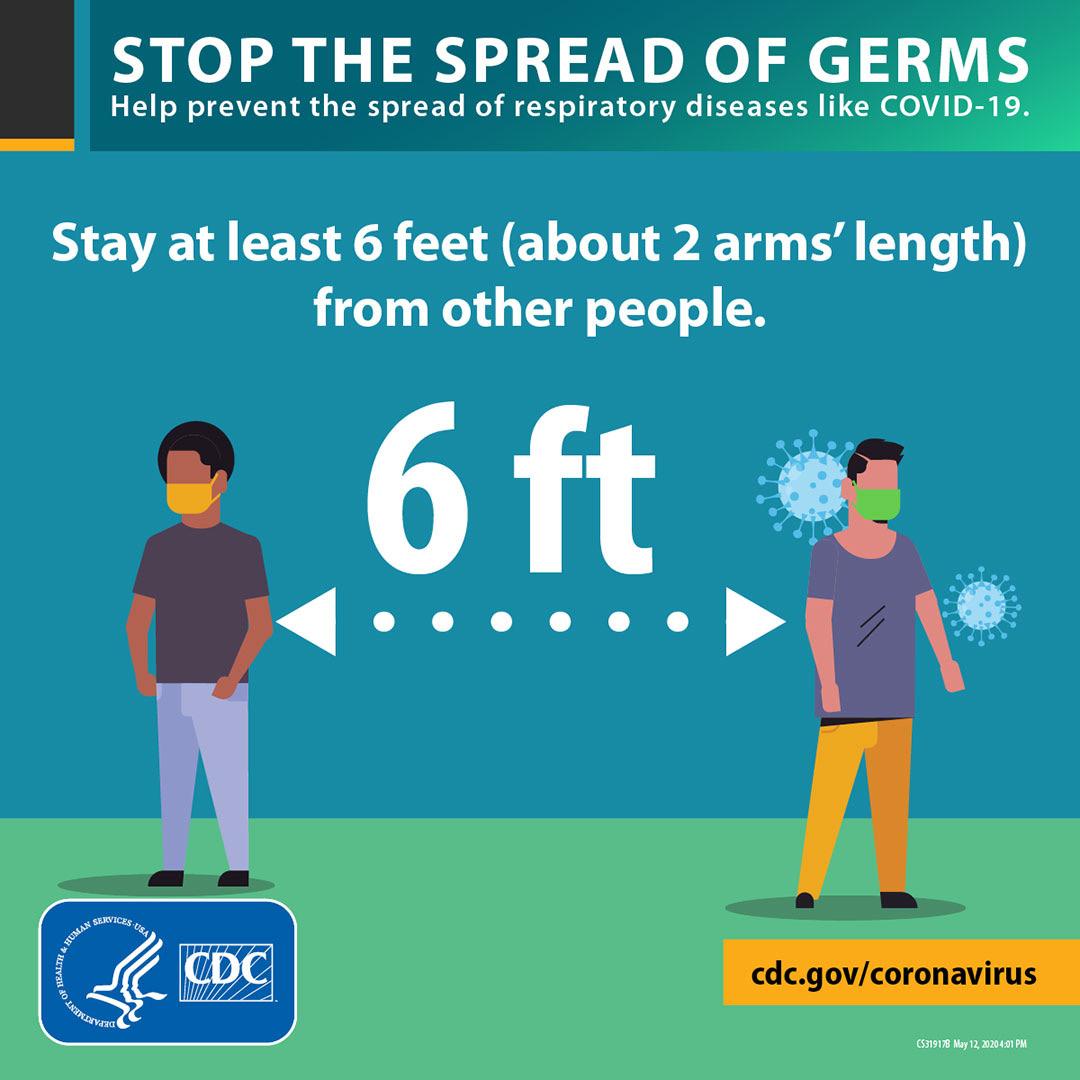 SEPTEMBER 2, 2020 SPERA IN DEO HOPE COLLEGE, HOLLAND MICHIGAN
SEPTEMBER 2, 2020 SPERA IN DEO HOPE COLLEGE, HOLLAND MICHIGAN
 SEPTEMBER 2, 2020 SPERA IN DEO HOPE COLLEGE, HOLLAND MICHIGAN
SEPTEMBER 2, 2020 SPERA IN DEO HOPE COLLEGE, HOLLAND MICHIGAN
Meet the Staff
Our Mission: The Anchor strives to communicate campus events throughout Hope College and the Holland community. We hope to amplify awareness and promote dialogue through fair, objective journalism and a vibrant Voices section.
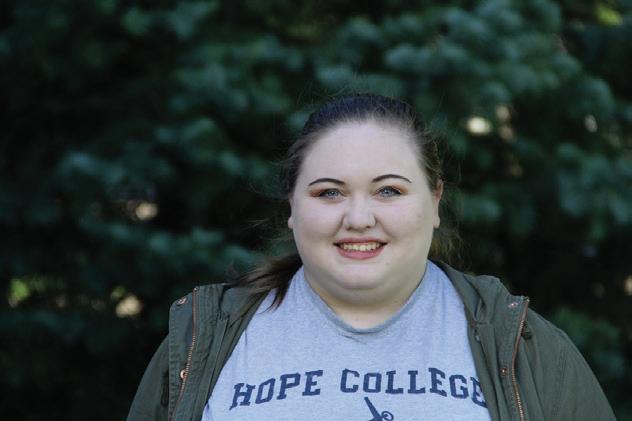
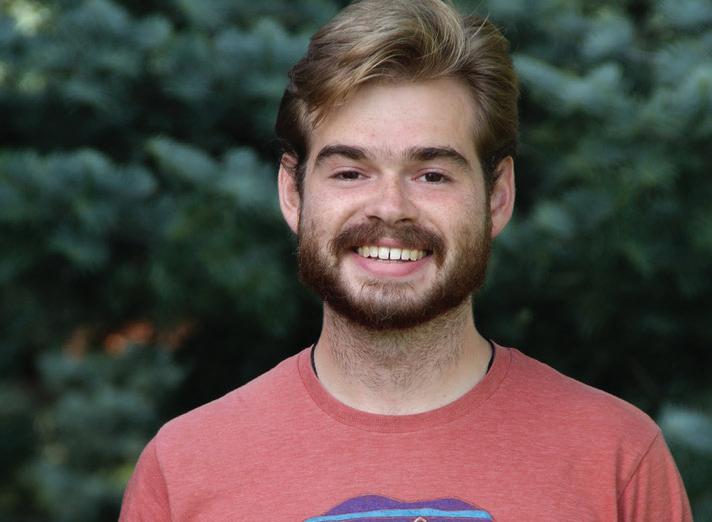

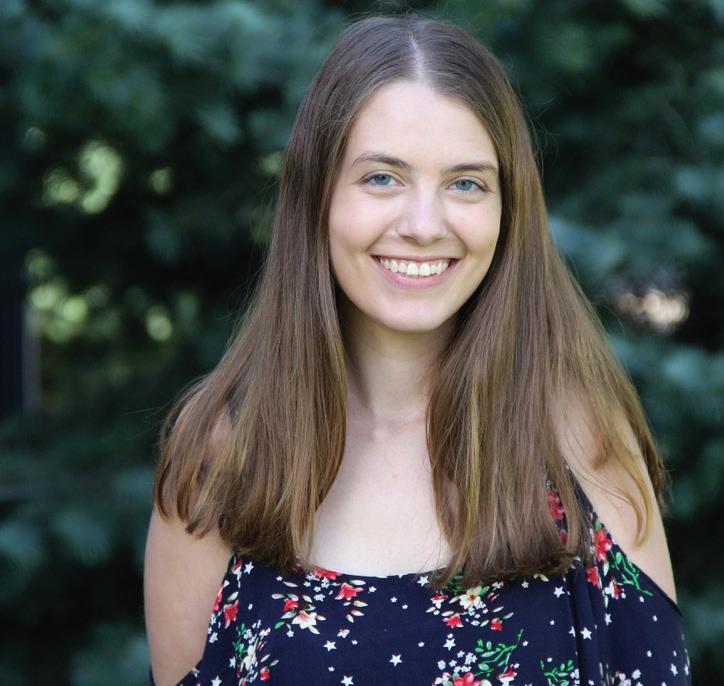
Disclaimer: The Anchor is a product of student effort and is funded through the Hope College Student Activities Fund. The opinions expressed on the Voices page are solely those of the author and do not represent the views of The Anchor. One-year subscriptions to The Anchor are available for $45. The Anchor reserves the right to accept or reject any advertising.

Letter Guidelines: The Anchor welcomes all letters. The staff re-
Gillian Skiba

Aubrey Brolsma



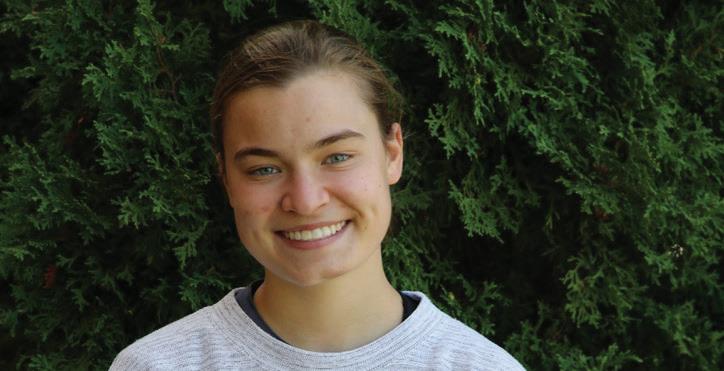


Timothy Embertson


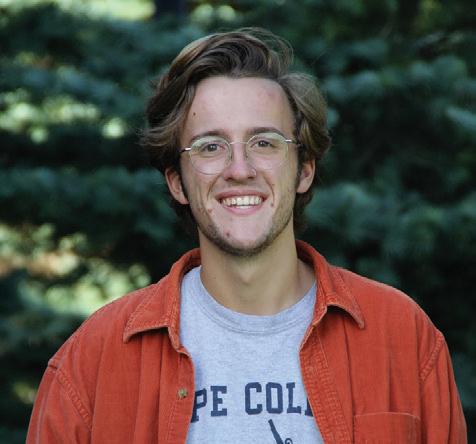
Grace Davidson
Alli Mitchell

Cameron Geddes
Mark Lewison
serves the right to edit due to space constraints, personal attacks or other editorial considerations. A representative sample will be taken. No anonymous letters will be printed unless discussed with Editor-in-Chief. Please limit letters to 500 words.
Mail letters to The Anchor c/o Hope College, drop them off at the Anchor office (located in the Martha Miller Center 151) or e-mail us at anchor@hope.edu by Monday at 5 p.m. to appear in Wednesday’s issue.
Advertising Policies: All advertising is subject to the rates, conditions, standards, terms and policies stated in The Anchor’s advertisement brochure.
staff writEr staff writEr staff writEr staff writEr staff writEr staff writEr
faCuLty advisor
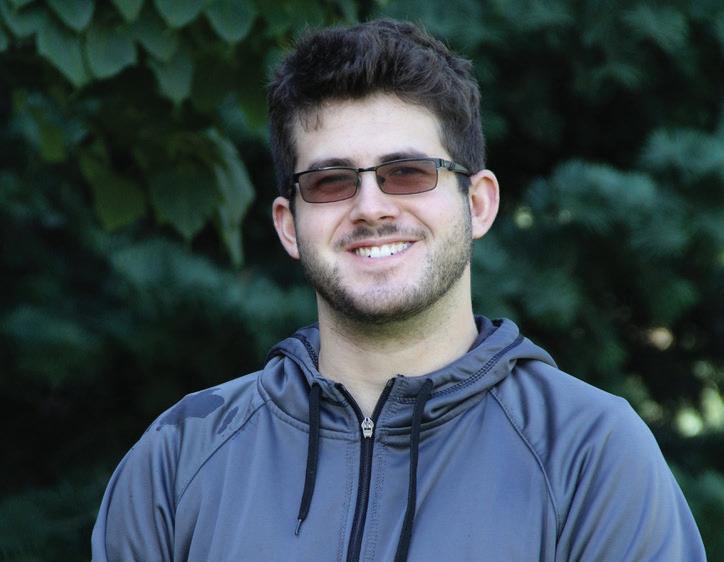
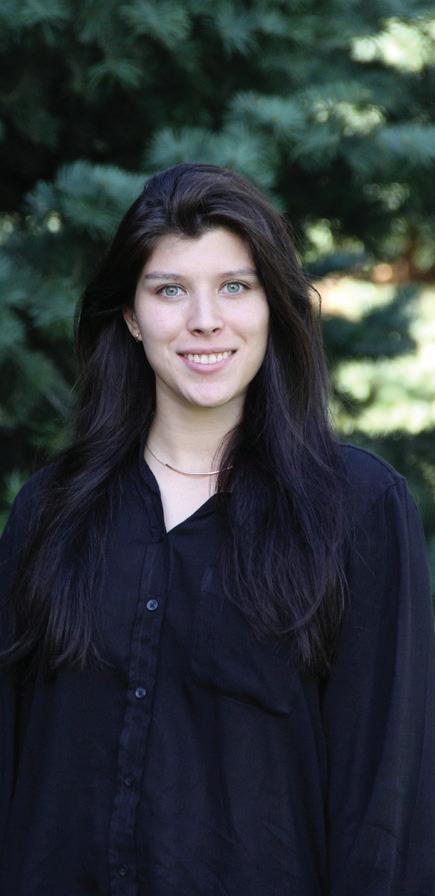
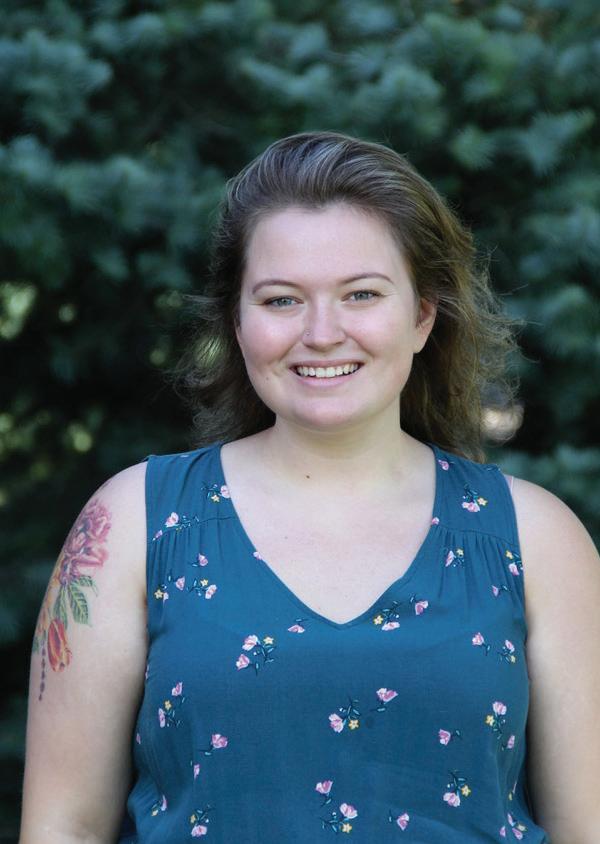
The Anchor will make continuous efforts to avoid wrong insertions, omissions and typographical errors. However, if such mistakes occur, this newspaper may cancel its charges for the portion of the ad if, in the publisher’s reasonable judgment, the ad has been rendered valueless by the mistake.
Advertisement Deadlines: All ad and classified requests must be submitted by 5 p.m. Monday, prior to Wednesday distribution.
Contact Information: To submit an ad or a classified, or to request a brochure or other information, contact our Ads Representative at anchorads@ hope.edu. To contact our office, email us at anchor@hope.edu. The
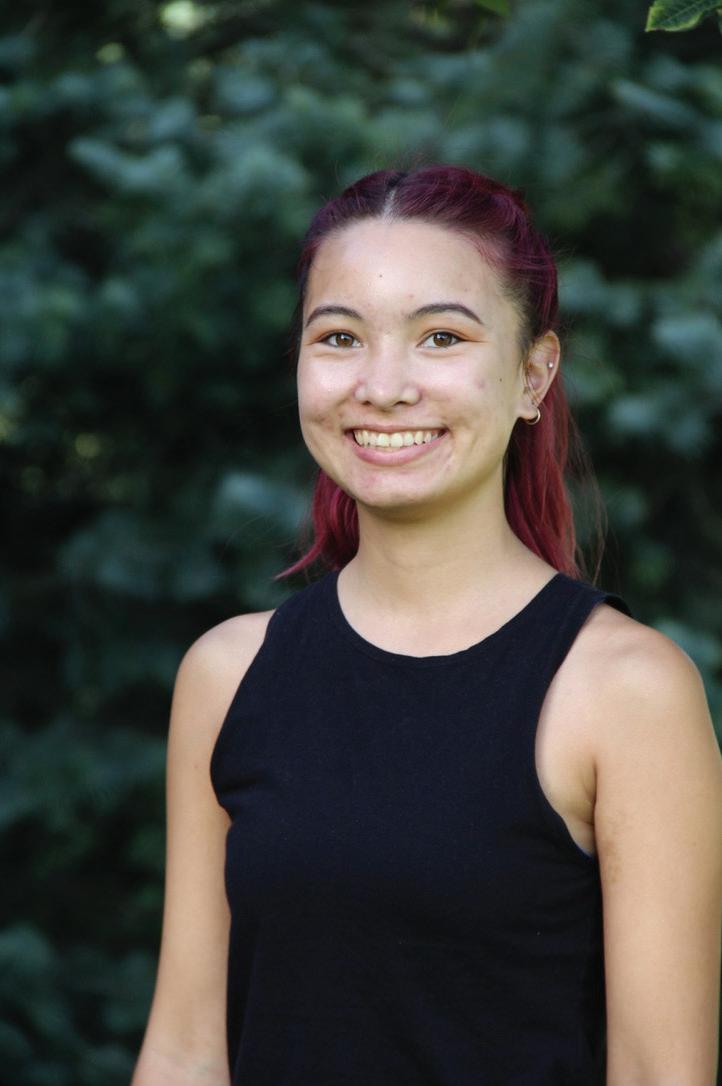
 Sarah Stevenson, Photo Editor
Zach Dankert, Campus Editor
Grace Davidson, Staff Writer
Morgan Brown, Production Manager
Aubrey Brolsma Staff Writer
Alli Mitchell, Staff Writer
Lindsey Muller, Media Manager
Gillian Skiba, Staff Writer
Sophia Vander Kooy Production Manager
Ruth Holloway and Claire Buck, Editors-in-Chief
Amanda Olson, Webmaster
Katy Smith, Arts Editor
Eli Maxwell, Opinion Editor Mikayla Zobeck, Business Manager Katie DeReus, News Editor
Annie Kopp, Features Editor
Liz Mathews, Copy Editor
Timothy Embertson, Staff Writer
Valerie Dien, Sports Editor
Cameron Geddes, Staff Writer
Sarah Stevenson, Photo Editor
Zach Dankert, Campus Editor
Grace Davidson, Staff Writer
Morgan Brown, Production Manager
Aubrey Brolsma Staff Writer
Alli Mitchell, Staff Writer
Lindsey Muller, Media Manager
Gillian Skiba, Staff Writer
Sophia Vander Kooy Production Manager
Ruth Holloway and Claire Buck, Editors-in-Chief
Amanda Olson, Webmaster
Katy Smith, Arts Editor
Eli Maxwell, Opinion Editor Mikayla Zobeck, Business Manager Katie DeReus, News Editor
Annie Kopp, Features Editor
Liz Mathews, Copy Editor
Timothy Embertson, Staff Writer
Valerie Dien, Sports Editor
Cameron Geddes, Staff Writer
Dear readers,
It’s been a while. We feel all kinds of ways about being back, and presume that you are all feeling a whole mess of emotions as well. These are “uncertain times,” as literally everyone likes to say. However, we’ve never been the type to use cliches, so let’s get into it.

Claire:
I can’t stop trying to smile at people under my mask. I’m well aware that all they can see is the scrunched up corners of my eyes, but I can’t shake the habit of grinning at the people I pass on the sidewalks of campus or the streets of Holland. Like the sound of a busy indoor coffee shop or the feeling of strolling casually through a store without worrying about crowds or contagion, the ability to give people my whole uncovered face is something I never expected to lose and never thought I’d miss. These days, I’ve often found myself thinking about the gift of being truly face-to-face with a loved one. While I’m so grateful for technology that allows me to minimize exposure risk by taking some classes virtually, to contact Ruth with a question about The Anchor instantly from across campus, and to chat with my parents back home in New York, I’m also acutely aware of what those interactions lack. There’s nothing like giving another person your whole un-fragmented presence-your voice, your thoughts, your own particular way of moving and inflecting--and I eagerly await the day when those interactions become commonplace again.

Since so much of our lives have shifted entirely online, why offer The Anchor in print at all? At least for me, the answer lies partly in this longing for physical presence. Once we realized that we could adjust our space and stagger the arrival of
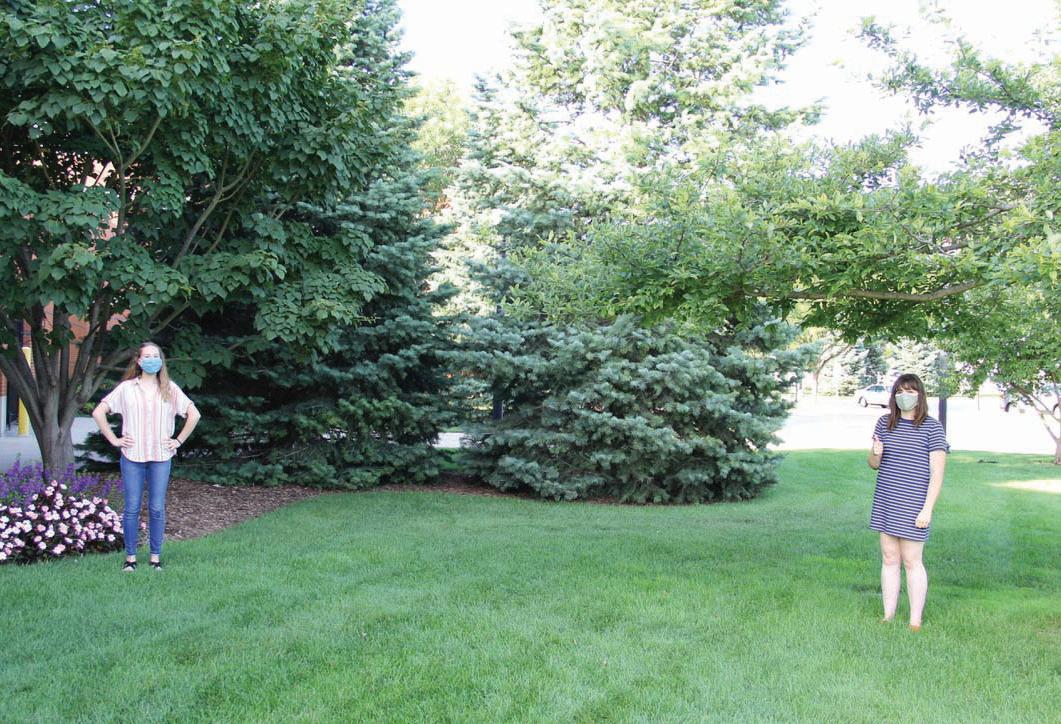
our editors to allow us to produce a print edition at minimal risk to our staff and community, Ruth and I both agreed that we wanted to take on this challenge. To us, printing The Anchor is about connection. There’s the connection that forms between staff members as they spend hours in the office wrestling with Adobe InDesign to lay out the beautiful pages that you get to hold. There’s the connection we
Ruth:
Confession time: I love the anonymity that a mask provides. Pair it with some sunglasses, and even your mother will have difficulty recognizing you. It’s great. Although I once fancied myself an extrovert, I’ve found the transition to remote classes and squinting instead of smiling to be surprisingly easy. No one is allowed in my room, and I have a handy excuse to get out of social engagements–what more could an overcommitted introvert ask for?
Although my five-month social hiatus functioned as a muchneeded reset, I really am thrilled to be back. It’s a relief to feel seen, if only from six feet away. Human beings are made to be in community with one another, and we crave the sensation of being known. So despite all of my wisecracks about the relief of circumventing awkward encounters with acquaintances in the Pine Grove, I do miss intimate gatherings with close friends and catching up over a meal at Phelps with my advisor. I miss congregating in the newsroom with all of The Anchor staffers and bonding over silly mistakes after hour nine in the office. As I write this, I am intermittently slipping kettle chips under the edge of my mask so as not to expose our faithful Production Manager to my mouth germs. Times are strange, but I’m thankful to be here, finishing out my senior year in this place that I chose at seventeen. I have changed much, but I still find comfort walking the (noticeably quieter) paths that wind through our idyllic little campus.
Before we get this show on the road, I want to say thanks to some important people. First, to our dedicated staff members–your hard work has not gone unnoticed. Thank you for bearing with Claire
and I as we made last-minute decisions and clued you in way too late about how this year was going to look. Yes, I will continue to email you three times a week and sign off by gushing about how cool you all are. No, I am not sorry.
Thank you to Claire, my co-editor. You are my ride-or-die. Tonight, some piece of equipment will malfunction or break, we will sit in this newsroom and laugh until we cry, and next month we will do it all again. There’s something really beautiful about getting to produce something great with someone that you love, and I will be forever grateful that my something is The Anchor and that my someone is you.
Have you ever played a video game that ends with “and thanks... to YOU!” Well, that’s what this is. Thank you, Hope College, for allowing us to come into your dorms and dining halls; to ask you questions and pester you with interview requests. We are honored to be here after more than one hundred years, still printing the news like it’s 1887. You’re our people and this is our place. How cool is that?
Ruth Holloway & Claire Buck Editors-in-ChiEffeel to our college when we scatter the final product across campus. There’s even the connection that exists across time--the students of Hope have been publishing this newspaper for more than a century. Right now, disconnect, whether it’s the literal kind that bumps you off a Zoom call or the sense of isolation you feel as you wander around the campus and wonder if you’ll find friendships that last, is an ever-present reality. Even as we long for these days of loneliness to end, we hope that The Anchor can create space for community in the midst of everything.
CAMPUS&BEYOND
CDI will move to Keppel House
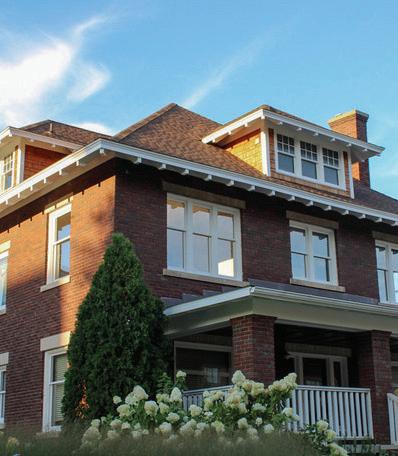 By Aubrey Brolsma Staff Writer
By Aubrey Brolsma Staff Writer
One of the top issues among college students has been cultivating diversity. Hope College’s Center for Diversity and Inclusion (CDI) is actively working to make this a reality. Since its founding in 2016, as part of Hope’s “Hope for the World” initiative, the CDI has been located in the Jim and Martie Bultman Student Center across from Kletz Market. Around midOctober, however, the CDI will finally be getting its own buildingKeppel House (the former campus ministries building). But what does this mean for students on campus?
Formerly the Office of Multicultural Education, the Center for Diversity and Inclusion allows students of color to be together and feel safe. The CDI provides many different services for students and faculty on Hope’s campus, but for many students, the CDI is so much more than a department. “It’s underrated. People don’t quite understand the power and impact the CDI really does make on campus,” said Student Outreach Ambassador and Assistant Diversity Educator, Taylor Calloway (’21). “The CDI is not just a space for students of color, but it’s a place for all students, because growth is really understanding what is different from you; it’s understanding different cultures, languages, religions, sexual orientations and identities. The CDI’s whole purpose is affirming and invigorating everyone’s identity. The CDI’s role is really supporting the need for students to learn what they are not learning in their major. So the CDI provides a space for that.” The CDI has traditionally been a place where students, white or of color, can ask questions and reaffirm their identities without judgement. It’s primary goal, however, is to provide a support system for students of color at Hope. The CDI organizes many events and programs on campus, such as the lecture series on diversity, the Step2Success program for incoming freshmen, Diversity Institute, the Women of Color and Senior Recognition night and the Leadership Empowerment Program, just to name a few. Along with all of that members help coordinate MSO events,
like the Black Excellence Dinner.
Vicente Bickel (’22), another Student Outreach Ambassador and Assistant Diversity Educator, says of the impact of the CDI, “When I think of the CDI and what it means to me, and what it means to students in general, I think I would say it is the center of Hope in terms of diversity not just physically, but an ideological center and homebase. The CDI is a place where you can go and really be heard if you’re a student of color on campus.”
For many students of color on campus, it’s exciting that the CDI is getting its own building, as Hope tries to put more effort into its diversity initiatives. The CDI’s current location in the Bultman Student Center, while central to campus and highly visible, could “feel like a fishbowl,” Calloway remarked. For such an important part of campus life, the fact that the CDI is only just now getting its own space is unusual: “The CDI currently shares a space with Student Life, so
they kind of get clumped together, and I think the CDI has always deserved its own space. You go to any other campus and their center for diversity and inclusion is going to have its own space. It requires space to be a place that networks for students.” With such close quarters, the CDI could never feel like a department all their own. Bickel added, “[The new location] creates a center and a space completely dedicated to its goal.” The new location will also make the CDI more accessible for the students it serves. In the past, giving directions to the CDI has been somewhat difficult, “Having that space and being able to say, ‘Oh, where is it?’ ‘It’s in the Keppel House,’ instead of, ‘Well, it’s in a corner of the Bultman Student Center, next to Student Life.’ That’s a hard way to direct students to go,” says Calloway. This move is largely viewed as a step in the right direction. The director of the CDI, Vanessa Greene, has been working tirelessly
to get the CDI a place to call home. Calloway, who was there when Greene announced the victory to a group of students, said, “This was her project, and we, as students, were behind her full force. She was talking to everyone she could about how the students deserve this space. So when the final decision came down, I remember the day she told us, she came out into the space outside of her office where a bunch of us would sit at tables, and she said ‘We have Keppel House!’ And all of us were just like ‘Aaah!’ and were all super excited.” Now, the CDI can have a place to call home, a place where students of color can go and not feel alienated. Gaining access to Keppel House was an uphill battle and showed that there are yet more battles to be won on Hope’s campus, Calloway said: “To be blunt, people have always questioned us students of color and whether we use the spaces we have. Students before us had fought for the multicultural lounge, so this was not new to people who work within the Center for Diversity and Inclusion. When you give us so little space, only so many students can use it at a time. We were asking for a bigger space because we are a community, and we will find any place as students of color to be in community with each other.”
Calloway and Bickel urged students to “Come check us out, come talk to us and learn more about the CDI, because we want to be your support system.” Inclusion is an all-or-nothing principle, said Calloway. Many students believe that if a college campus isn’t 100% dedicated to supporting all of its students, then it isn’t an inclusive place. If students don’t interact with people who are different from them, with different races, cultures, languages, sexual orientations, gender identities, religions, ethnicities, socioeconomic statuses, etc., then they will never have space to grow as a person. “You don’t go to college to end up being the same person when you go home,” Calloway commented. The CDI is continuing the fight to make Hope a more inclusive place, and now they have the space to really stretch their legs and make even more of a difference.
Aubrey BrolsmaDiscontent among dining hall staff
By Cameron Geddes Staff WriterIt’s a challenging job to feed thousands of students every day, three times a day, for a whole academic year. Student dining at any higher education institution is a touchy subject, with a variety of complaints, both legitimate and illegitimate, coming from students. Even with plenty of staff on hand and enough physical food resources, to handle such an extreme volume is difficult enough without the COVID restrictions Hope College is currently facing. Restructuring based on student health only adds to this task, and despite hard work by the staff, it’s no secret that many students this year are disappointed with how the measures have affected their options. In Phelps Dining Hall for example, the options available to students are limited to a temporary station set up beside the breakfast/ pastry section, The Globe, fruits and vegetables near the salad bar, and the Deli and Market section (which serves salads, soup and sandwiches between 1:30 p.m. and 5 p.m.) Having extremely limited indoor seating also incentivizes students to go outside, where distance restrictions may be knowingly or unknowingly broken.
However, one side of the dining services situation that most students are not aware of is the brewing discontent among employees and Hope’s third-party dining services contractor, Creative Dining Solutions. The Anchor interviewed 51-year-old Michigan

native Mark Ludwig, who graduated from Michigan State with a degree in Environmental Issues and a short-course degree in grass-based dairy farming from University of WisconsinMadison. Mr. Ludwig previously ran for Michigan State House in 2018, and is now running for Drain Commissioner in Allegan County. Mr. Ludwig is currently employed within dining services as a pantry chef. His interest in politics has, however, served a unique and important purpose, as he is now seeking to form a union of dining services workers.

Mr. Ludwig claimed that the effort to unionize has been almost wholly on his part, calling it his “baby” and recognizing that “not a ton of people are involved at this point.” He claimed that the break structure had been changed measurably, with the most significant change being the reduction of meals allotted for workers from two to one.
This was an unpopular decision, and Mr. Ludwig pointed to two arguments against this decision: “Number one, it seems like a kind of a poorly timed decision, just from a cultural perspective. There’s so many things that have changed with this COVID situation that messing around with the breaks seemed excessive.” The second argument is of pragmatism; the lack of a designated, Hopeprovided lunch will lead to issues of hunger and workplace vigor. Mr. Ludwig said that it was both bad for the employees and could create risk with COVID measures. “What I really fear is that [this] leads people to snack on the production floor, which is not allowed. As I pointed out to management, people are animals, and if they’re standing in front of food all day long and they’re hungry…some are just plain going to have something to eat.”
During the interview Ludwig was noticeably level-headed regarding the situation. When asked about what other changes that management within Creative Dining Services has made, he remarked that the elimination of family meals was reasonable and intuitive, as family meals violate the idea of limiting COVID transmission by introducing
outsiders into Hope dining. Another change for which Mr. Ludwig does not blame management is the fact that the labor has become more repetitive and manual, with lots of heavy lifting and packaging due to the change in dining structure and a 13% reduction in staffing, which has not yet been filled. He credits dining for rolling back much of those jobs, but he stressed that the work is more physically demanding than the work of last year: “You feel like you’re running out of calories by the early afternoon.”
Returning to the topic of why the second meal has been discontinued, Mr. Ludwig had this to say: “Some of it has to do with management’s priorities. I’ve gotten conflicting answers on particularly why [the] second meal has been eliminated, [and] I was refused an answer on how much money that’s saving. That’s said to be proprietary between Creative Dining Services, which is the contractor that actually makes the food, and Hope.” Mr. Ludwig claimed that, from his own estimates, the measure would not save money, and thus the decision seems arbitrary in his opinion. Mr. Ludwig additionally estimated that
the college would not be saving money due to the decreased variety of food options because of how expensive the packaging is. Indeed, it stands to reason that much of the budget saved in terms of variety would be put toward increasing the volume of the remaining options.
Mr. Ludwig noted that efforts to establish the union have slowed after a constructive meeting with management that resulted in more leniency and availability for water breaks. There does appear to be tension remaining between management and staff, but it appears the hostility in these negotiations and conversations is minimal. Nevertheless, Mr. Ludwig remains committed to the working conditions of the “frontline” staff: “You know, I just think frontline staff is not the place where you tighten up.” He claimed that the Safety Commission has not been involved in these discussions at all, and that is something he would like to see changed.
At the time of this publishing, The Anchor has not yet received comment from Creative Dining Services in response; however, we are aware that one is being developed.
Ballotpedia Cameron Geddes MARK LUDWIG — Ludwig is now running for Drain Commissioner in Allegan County.CAMPUS&BEYOND
DNC and RNC: Top 5 moments of each
Morgan Brown Production ManagerFor the past two weeks, nearly every night has presented an opportunity for Americans to learn more about the 2020 election. With the Democratic National Convention (DNC) kicking off August 17 and continuing through August 20, and the Republican National Convention (RNC) following from August 24-27, the news has seen no shortage of compelling moments from each party. The conventions served as formal nominations of Donald Trump and Joe Biden, marked by speeches from their supporters and culminating in remarks from the candidates themselves. There are countless moments from each convention that proved both powerful and tactical. Based on a combination of my personal opinion and what moments stood out to reporters in their post-convention analysis, here are the top five moments from each convention.
DNC COVERAGE
The former president did not hesitate to unleash his feelings about Donald Trump’s time in office. CNN labeled the speech a “stunning takedown” of the current president and his administration. Obama referred to Trump’s failures as “severe” and warned Americans that the president has not or will not “grow into” the job. He accused Trump of “treating the presidency as…one more reality show that he can use to get the attention he craves.” Though he continued on to praise Biden and his VP pick, Kamala Harris, Obama made history as the first president to attack his successor so directly.

#4: A moment of silence for George Floyd
America was thrown into a state of unrest after the death of George Floyd this past May. Amidst debates about racial injustice and police brutality, citizens took to the streets in protest, eventually leading to charges against the officer who killed Floyd and a push for sweeping police reform nationwide. Floyd’s brother, Philonise, issued a call to keep pursuing justice, uplifted the
names of several black men and women who “should be alive today” and held a moment of silence for his lost brother. This moment, along with many others throughout the convention, showed the dedication of the Democratic platform to pursuing justice and equality.
Urquiza shared the deeply personal story of her 65-year-old father’s passing due to COVID-19. Her father being a healthy man with no pre-existing conditions, Urquiza blamed her father’s death on President Trump’s response to the virus, criticizing his wavering views on masks and his prioritizing of the economy over safety. “His only pre-existing condition was trusting Donald Trump,” Urquiza said in a particularly powerful moment.
“And for that, he paid with his life.” Her story represents the other major issue at the top of the Democratic agenda: conquering COVID-19.
Harris’s speech began with a personal story, as she recounted her experience as the daughter of immigrants, with her father coming from Jamaica and her mother from India, making Harris the first woman of color to be nominated for vice president. The second half of the speech focused primarily on the problems Harris, and subsequently the Democratic party, sees in America today and issued the optimistic belief that “we
can do better.” Harris praised not only Biden’s actions throughout his 47 years in politics but also his character as a father and a leader. Biden, she claimed, will be a uniting force for Americans who want to see positive change.

In the past few months, it has been a rarity for Joe Biden to speak live. His speech closing out the fourth and final night of the DNC highlighted both his agenda and moral character. Biden touched on the two main facets of the Democratic platform, racial justice and COVID-19, but while not delving into extreme detail, also mentioned a wide array of issues for his presidency to focus on, such as Obama’s Affordable Care Act, the cost of college, the minimum wage, climate change and more. The speech painted a picture of Biden as an empathetic man. Having lost his son, Beau, to cancer in 2015, Biden acknowledged the emotional weight
of loss that is surely affecting those whose loved ones have passed from COVID-19. The speech was broad enough to appeal to moderate voters, leaving the image of Biden as a uniting figure. “United,” he said, “we can, and will, overcome this season of darkness in America.”
RNC COVERAGE
It is a common stereotype that the Republican party lacks diversity. The lineup of speakers at the RNC clearly sought to defy that notion, particularly as it relates to women, an identity group with which President Trump is not particularly popular. Women who have worked alongside President Trump, such as former United Nations Ambassador Nikki Haley and Kellyanne Conway, the first woman to run a successful presidential campaign, praised Trump’s policies and his character. Two significant speeches came from First Lady Melania Trump, who painted a picture of America as the land of opportunity and resilience amidst hardship, and Kayleigh McEnany, Trump’s current press secretary, who spoke of the president’s support after she underwent a preventative mastectomy, as well as the president’s compassion for struggling Americans. Clearly, one goal of the Republican party is reaching out to women.
On the convention’s first night, President Trump interviewed a panel of seven essential workers who have been at the frontlines of the pandemic. The president praised the hard work of a postal worker, a trucker, a custodian, a police officer and a sheriff’s deputy,
Cont. from pg. 6
both of whom had recovered from COVID-19. Guests also included two nurses working in New Jersey hospitals, who praised the president for his funding, equipment and leadership. This panel served as one example of Trump’s appeal to those who have become essential during the pandemic.
Three times throughout his life, Jon Ponder has been arrested for bank robberies. By the end of his final stint in prison, from 2004 to his release in 2009, Ponder had accepted Christ and committed to not only reforming himself but the nation. He now runs a program called Hope for Prisoners, which helps newly released prisoners reintegrate into society. Ponder was accompanied by Richard Beasley, the former FBI agent who arrested him but now considers the former convict a friend. Ponder grew emotional as President Trump granted him a full pardon, evidencing his support for prison reform and redemption in Christ.
President Trump invited five immigrants to the White House for a naturalization ceremony on the second night of the convention. The group, representing Bolivia, Lebanon, India, Sudan and China, took an oath to become official US citizens. The president congratulated them, referring to citizenship as “the most prized, treasured, cherished and priceless possession anywhere in the world,” and praised them for the work they had already done in becoming productive, vital members of American society. The moment spoke as a clarification of the Republican opinion on immigration. They are pro-legal immigration; anyone from any background can thrive in the United States.
The president’s acceptance speech, reminiscent of a State of the Union speech, focused primarily

on his accomplishments in office and the prominent principles of his vision of America. While the president has been known to improvise many of his brash speeches, on the final night of the RNC, Trump maintained an air of professionalism. He highlighted issues that have been staples of his campaign from the very beginning – economic prosperity, defense and national security and stronger borders – as well as accomplishments since his election
in 2016, such as the Right to Try Act, fighting human trafficking and demolishing the ISIS regime. The president struck a blow at the DNC’s general avoidance of policy discussion: “You barely heard a word about their agenda. But that is not because they don’t have one. It is because their agenda is the most extreme set of proposals ever put forward by a major party nominee.” In contrast, the president pushed the message that with his agenda, “the best is yet to come.”
Hope’s student-based COVID-19 study
Note: If you are experiencing symptoms of COVID-19, please contact healthcenter@hope.edu and do not sign up for this study. The Health Center is happy to provide COVID-19 testing for all students on campus.
As the world frantically searches for new approaches to uncover the unknown about COVID-19, a research team at Hope College is contributing to the discussion by crossing sociology with biology in a new study. Seeking to provide Hope and beyond with new information that may improve decision making in regards to COVID-19, the study aims to evaluate how one’s perception of the virus correlates with their contraction of it.
The team has rented two rooms in the Schaap Science Center, one for participants and the other for assistants, who will video conference with the participants to safely guide them through an antibody test. The participants will
both take the antibody test and fill out a survey questioning several facets of their perspective, ranging from family life and political affiliations to the participant’s dedication to mask-wearing. All data will be kept anonymous. At the completion of the study, the research team will analyze how different aspects of people’s perception and identity correlate with positive or negative test results.
In addition to providing further testing of Hope’s campus, this study will likely give context to patterns of positive testing, allowing the college to more efficiently educate students on staying safe and healthy. It will also encourage students to examine their behaviors and attitudes, as
these could contribute to their likelihood of contracting the virus.

This study is still looking for participants, so students are encouraged to sign up to participate in the study and will be rewarded with general credit for research and a free COVID-19 antibody test with results. Students can sign up by filling out a quick-release form, accessible with the QR code to the right. This is a great opportunity for Hope students to be involved with research that has the potential to save lives and change how people are responding to the global pandemic. If you have any questions or concerns about this study, please contact the research team: covid19research@hope.edu.

A snapshot of racial injustice in America
Allison Mitchell Staff WriterAhmaud Arbery, Breona Taylor, George Floyd. If you have been paying even the slightest bit of attention to national news over the past few months, you are sure to have heard these names, the latest and surely not the least of these being Jacob Blake. Protests across the country this past summer showed people of all ages speaking out for what they believed in and demanding justice for those whose lives were taken too soon, which is in no way a new phenomenon. This piece is being written exactly one week after the events in Kenosha, Wisconsin began to unfold. While what happened there seems to follow a continuing narrative of violence against people of color, protests, news coverage, etc., the events in Kenosha feel different. They feel sharper and more dangerous, perhaps because of the proximity of events in relation to the rest of the Midwest.
On August 23, twenty-nine-yearold Jacob Blake was shot in the back seven times by Kenosha police officer Rusten Sheskey. This encounter began as police were attempting to arrest Blake. It is still unclear as to why Blake was being arrested. Some sources claim that he was suspected to be involved in an incident of domestic violence, and others claim that Blake was found to have had a knife in his car after it was searched by police. Civilian video captured the violent portions of the encounter, which then blew up on media outlets across the country. However, Blake miraculously survived his injuries, and his family has stated that he is now paralyzed from the waist down. When he first arrived at the hospital, Blake was handcuffed to his hospital bed despite the fact that he was in a coma and will never be able to use the lower half of his body again.
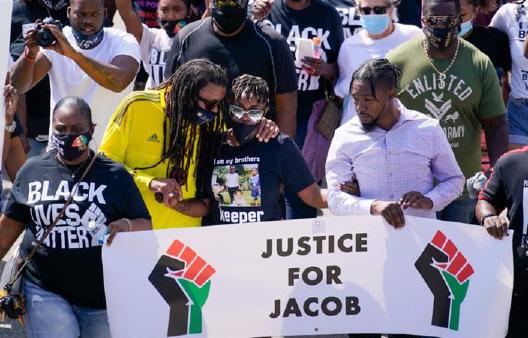
As more information became available to the public, protests across the nation began to occur. In Kenosha, roughly one thousand people showed up after the shooting to stand in solidarity with Blake and his family. While the majority of the demonstrations that occurred remained peaceful, some instances in the evenings ended in rioting and violence. On the night of August 25th, the protests in Kenosha ended in murder when seventeen-year-old
Kyle Rittenhouse shot three protestors: Joseph Rosenbaum, 36, Anthony Huber, 26, and Gaige Grosskreutz, 26. Rosenbaum and Huber died from their injuries and Grosskreutz was left with a gunshot wound in the arm. Rittenhouse was not from the Kenosha area and traveled across state borders from Antioch, Illinois with assaultstyle weapons. Rittenhouse had an active presence of support for the police on his social media and posted photos of himself holding a number of assault rifles prior to the murders. His official motivation is unclear, but his actions are not surprising when the actions of other counter protesters are taken into account. Many identified themselves as being “self-declared public militia members” who sought to fill in the gaps where police could not protect businesses from being looted. Throughout the night, these “militiamen” were seen interacting with police, including video footage of the police thanking them and offering them water. The Rittenhouse shootings occurred around 11:45 pm when everything had turned chaotic, and so it was unclear what was happening. A video from Washington Post journalist Whitney Leaming shows what went down during the shooting and in the

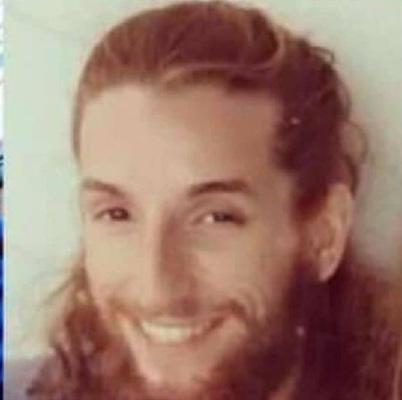
aftermath. Witnesses attempted to perform CPR on those who had been shot, while others tried to find Rittenhouse and hold him captive while police were called to the scene. Rittenhouse was able to return to his home in Illinois. On August 26th, he was arrested and charged with 1st-degree intentional homicide.
In the wake of these events, the country is in shock. To see someone so young and so willing to take life that easily is completely unsettling to political leaders across the nation. The Kenosha sheriff stated, “In Kenosha, we’re not accustomed to riots.” The Wisconsin National Guard was deployed in an effort to calm things down after everything that occurred. Given that the country is in an election year, presidential candidate Joe Biden and President Donald Trump spoke on the events that occurred. Biden stated that he did not support rioting, however he understood the pain and reasoning behind it, saying that he “stood in solidarity with protestors and the family of Jacob Blake.” President Trump is scheduled to visit Kenosha and meet with Blake’s family in the days to come, according to a statement released from the White House.
New section alert: seeking your opinion
Eli Maxwell Opinion EditorHello, and welcome to the new Opinion section here at the Anchor.
Previously known as Voices, the Opinion section will feature a cast of writers throughout this school year from across campus, from students to staff and faculty members, to give their two cents on any given topic.
In this edition, President Scogin answers the question, “Why did we
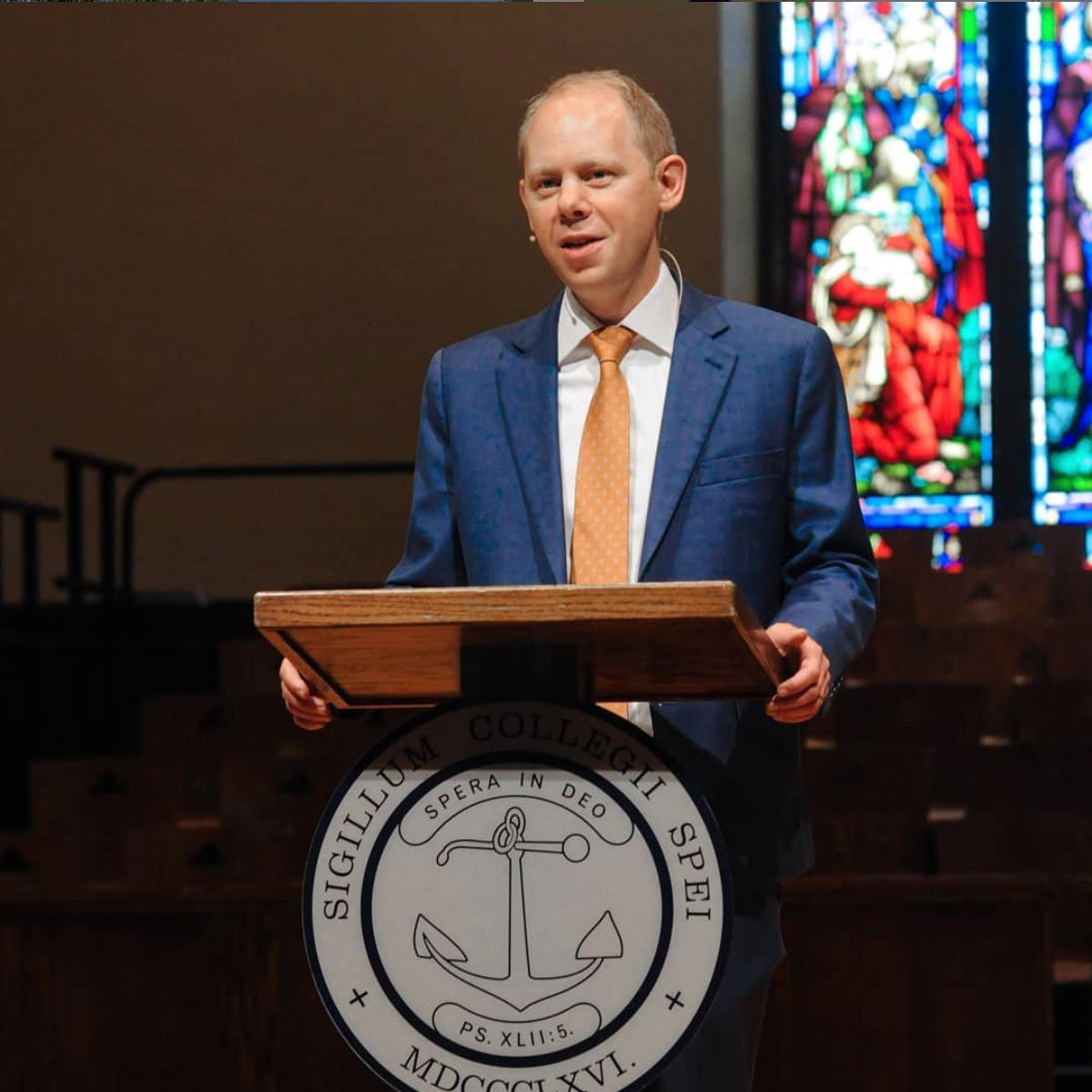
come back to Hope? Why come back when so much seems to be different?”
Because the Opinion section will be asking for contributions from the entire Hope population, that means we want to hear from you. If you have an opinion that you want to write about, whether that be something political, an analysis of the everpopular coffee versus tea debate,
or if you just want to talk about the flaws of the Netflix interface and how they drown your recommendations with too many good looking movies and TV shows, let us know. You can also contact us about students or professors who may have a passionate opinion about something so that we can reach out to them.
Email either the anchor at
anchor@hope.edu or the Opinion section editor at elijah.maxwell@ hope.edu with your opinion, and we will get in touch with you about a deadline and all that fun stuff.
The Anchor is very much looking forward to working with new writers this semester from a variety of backgrounds and viewpoints. See you on campus.
Doing hard things: A president’s perspective
President Matthew Scogin Guest WriterWe are now a few weeks into our Fall semester, and one thing has become abundantly clear to all of us: this is hard! I miss gathering together in person. I miss chapel; I miss sporting events; I miss the Phelps ice cream machine! We have signed up for a difficult semester.
The question is: why did we choose this? Why was the Hope College staff and faculty motivated to work long hours all summer— what is usually a time of rest—to make it possible for you to come back? Why did you, students, overwhelmingly want to be back on campus, even though you knew it would be different? And why are we, as a community, committed to doing hard, uncomfortable things for the sake of staying on-campus together?
Here are some of my reasons for choosing to do this hard thing, and why I think it will be worth it.
The first is that you will build relationships. Now this might sound counterintuitive: isn’t it harder than ever to make friends? But think of it this way: right now, we are living through an era that will define this century and will define your generation. For the rest of your time in college, for the next 10 years, at your 20 or even 50 year college reunion, you will remember and be talking about this semester. For the rest of your life, you’ll be saying things like, “I went to college during COVID,” or, “Remember when we met, you were wearing that mask?” For some of you, this will be your
love story: “The first thing I noticed was her lovely eyes… because that was all I could see underneath her mask.” Shared experience is rich soil for relationships. As we live in this era together, you will make memories and friends that will last a lifetime.
Second, we want you here even though it is hard because we believe you have a lot to contribute. You have already proven your grit and resilience. You have dealt with an abrupt pivot to online classes,
Matthew Scoginthe disappointment of so many cancelled sports games, concerts and events, and you’re adapting to the current guidelines like champions. You are learning a lot. You are supporting each other. We know that you have a lot to contribute, and therefore you will make an impact here at Hope and beyond!
Finally, and more broadly, we have chosen to do a hard thing this semester because we believe the world needs what we have here. The
world is full of despair! It seems like we can’t go a day without another tragedy or hardship—from acts of police brutality to struggles with mental health—rearing its ugly head in the news or in our personal lives. The world needs hope! There is no better time to shape leaders to go out into the world as problem solvers and agents of hope. That’s you, and we are excited and determined to help equip you with what you need to spread hope to the world.
Yes, this fall is going to be hard. There are lots of things we don’t like. And yet, as we yearn for this season to be over, we should also look for the opportunities that exist in the here and now. That is a profoundly biblical mindset. As Christians, we yearn for God’s redemption of the world, but we don’t spend our whole lives just yearning for heaven! We look for joy in the midst of current suffering and keep our eyes set on the reasons why we persevere. That’s a mindset of hope.
“My fellow believers, when it seems as though you are facing nothing but difficulties see it as an invaluable opportunity to experience the greatest joy that you can! For you know that when your faith is tested it stirs up power within you to endure all things. And then as your endurance grows even stronger it will release perfection into every part of your being until there is nothing missing and nothing lacking.”
James 1:2-4,TP
Thank you, Hope College, for your endurance. You’re an inspiration.
ARTS
Is that a wrap? Examining the state of movie theaters in 2020
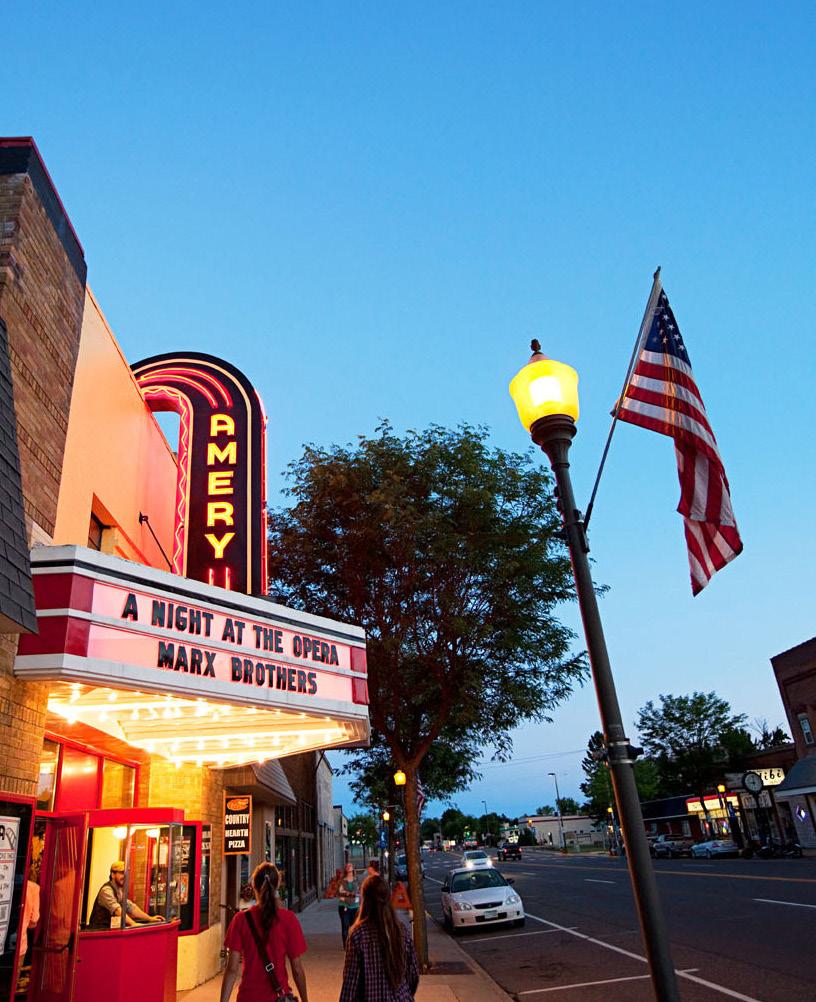
 Timothy Embertson Staff Writer
Timothy Embertson Staff Writer
I was recently asked, quite ironically through an open mouth full of food, “What is your biggest pet peeve?” Regardless of living in a world full of slow drivers and toilet seats left up, I had a simple answer that instantly brought me back to February 8, 2014.
After I grabbed my ticket stub and large Sierra Mist, I shuffled to theater three to see the attendant already closing the door. Not wanting to blind dozens of innocent folk moments after they were plunged into darkness, I quickly Cupid-shuffled my way in with the obscenely large soda in hand. Following a handful of previews, an underrated part of the experience, Morgan Freeman’s velvety baritone guided me into “The Lego Movie.” However, after 20 minutes of plastic antics, George Thorogood’s “Bad to the Bone” erupted from a few rows back.
“Paul here. Yeah I can talk. Some Lego kids movie. No, I’m in the back. It’s whatever.”
Now don’t get me wrong, I am generally an agreeable person, but there is a special place waiting in the afterlife for people like my new friend Paul.
Fast forward a handful of years, and, as I left the Holland 7 after seeing “Harley Quinn: Birds of
Prey” (a complete dumpster fire, but don’t tell my date I said so), I didn’t realize it was the last time I would see the silver screen for months to come. Following massive national closures due to COVID-19, thousands of theaters — local and chain, arthouse and blockbuster — were mandated to shut their doors. AMC announced an expected loss of over two billion U.S. dollars in the first financial quarter alone and expressed having “substantial doubt” that they would be able to recover following the pandemic, reports CNN’s Frank Pallotta. The film industry, both in production and distribution, came to a grinding, hemorrhaging halt and led many to question the plausibility of recovery.
But of course the ability to view films didn’t evaporate. Streaming services that offer a plethora of movies and shows saw an uptick in traffic as millions were confined to their homes. Some traditional drivein movie theaters even managed to reopen sooner than expected with their ability to offer distanced viewing (“Toy Story 4” was a good time through the windshield of a Pontiac Vibe). A large amount of industry attention has been directed at the all-digital opening weekend of “Trolls World Tour” as it soon breached 100 million dollars
globally, affirming the marketability of Premium Video On Demand (PVOD) services. While this one film was a toe in the water, its ability to drum up attention ensures that regardless of theater recovery, accessing film digitally will not be fading anytime soon.
Looking forward, the big question for both cinephiles and casual moviegoers alike is whether brick and mortar theaters will continue to even exist. Despite the doubt leveled at their reopening, AMC has already begun to cut the tape for a number of locations as of late August, in time for the release of films like the much anticipated Christopher Nolan directed “Tenet” and X-Men spinoff “The New Mutants.” While all the theaters that have opened up must follow strict guidelines for distancing and maintaining capacity, the projectors are starting to roll once again. We Michiganders and fellow on-campus students, however, need to wait a bit longer, as shutdown orders maintained by Governor Whitmer have prevented theaters from resuming business until at least September 4, though we look forward to hearing more from her this week. Even in states where reopening is permitted, many theaters are hesitant to open their doors, and their potential patrons are just as hesitant to buy a ticket.
In light of these cautions, we do have the gift to start reconsidering what a movie theater experience really is. It is clear that the “big players” and the “little guys” are both affected. With Hollywood
itself bleeding out controversy and financial loss on the daily, maybe now is the time for smaller film companies, art houses and indie filmers to capitalize in order to gain a firmer grasp on the film community. For example, small showings of avant-garde work have had the opportunity to spring up. Outside showings in parks, sports fields and parking lots can bring communities together. Shows by diverse peoples previously overlooked might now be able to muster attention in a rebuilding field. Maybe movies will no longer be shown in dedicated buildings with overpriced popcorn and gummy worms, but instead could inhabit exciting new settings. Will “the blockbuster” ever disappear? No, Michael Bay has a job for now, but there is a vacuum hungry for fresh new film and similarly fresh ways to view them.
Understandably, movies are not a necessity of life. They are a form of entertainment — at best a hobby — and in times like these, we all need to form priorities. But going to a movie in the theater is so vastly different from watching Netflix in your “Die Hard” pajamas (Got something to say?). It’s a community living room where everyone’s identity disappears into the dark, only illuminated by flickers and glows. Nothing compares to participating in a live laugh track or gasping in unity. It’s escapism at its finest, and I miss it so dearly. So, hopefully by September 4… See ya at the movies, kid.
Mr. E and The Boy
Katy Smith Arts Editor and Timothy Embertson Staff Writer
and Timothy Embertson Staff Writer
‘Dad’s Doll’
Have you ever loved too much?

It’s like when you spread the whole avocado on your toast and end up with more green sludge than bread, and your breakfast would have tasted just as good — no, better — if you only used half of the avocado. I’m used to spreading it on too thick, spreading on love too thick. I think I learned how to love too much from being loved too much. Or being loved in a way that makes words of affirmation like “You are my world” feel like worship.
What smells remind you of love?
The coat of Axe body spray that your seventh grade boyfriend used to disguise the sweet pea scent that your best friend wore? The smell of a dozen dolls dusted with aromas of baby powder and childhood innocence? Since sometimes we lose the ones we love, I long to recall the smells: James’ Jameson coated breath the night we slipped into a sultry slumber, Mom’s red wine lips that whine about my growing up too fast, the stench of a stale human when he’s waited too long to shower. Some scents still slip up
my nasal cavity effortlessly while others burn little holes in my nose as if they are the cocaine I swore I’d never try. I think my nose would be less stuffy if I got it all out.
I think my life and yours will make more sense if we analyze the scents (See what I did there?).
The scent of chicken grilling next to chalk-coated cement reminds me of family dinners. A table set for 4, or 34. You see, I am an only child with 30 siblings. At least that is what my dad would tell you. I guess I lost my siblings when I lost my imagination. The smell of plastic skulls still remains in my brain. Who knew the kiss placed on a plastic head could be more passionate than the kiss bestowed upon a wife? It started at age three, the doll obsession that entranced daddy and me. I even suspected that I was part doll.
I had this thing for always picking the toys in the back of the shelf that I thought no one wanted. If there was a perfect teddy bear next to a bear with a bent ear, I wanted the sad one. Dad taught me that all of the toys deserve loving. He used to tell
me this story about how he and my mom went to the doll hospital and toy soldier store, and they saw me in this cobweb covered box reaching, pleading for someone to buy me. My bent up box was right next to dazzling dolls enclosed in boxes with perfect 90 degree angles. But like me, my dad had a thing for picking the toys in the back of the shelf. My dad dusted the dirt from my plastic shield, bought me, and knew that I would always be his favorite doll! I came to realize I am not part doll; however, I don’t think my dad ever came to realize that the dolls are not part human. I’m going to stop calling them dolls now, my dad wouldn’t like that I have been. We call these plastic friends The Children.
The Children were my childhood and my dad’s adulthood. Each one had its own personality. Giant was obsessed with food, Boy was obsessed with girls, and Bubba was obsessed with beating me at everything. I think the role-play is when I found my love for plays.
Want to read more? Head to our website, anchor.hope. edu, for the rest of this gripping piece of creative nonfiction by Meeron (’20).
FEATURES

Ready For Life suspended on campus this fall
Throughout Hope’s campus and the entire country, there have been outcries against injustice and inequality. Just the other day, I was walking through the science center and saw a Black Lives Matter event poster. My heart ached. In a world with so much to offer, the best that we can do is exclude people. Recently, it came to my attention that students enrolled in the Ready For Life (RFL) program would not be welcome on Hope’s campus this semester. According to the website rflnetwork. org, Ready For Life provides “postsecondary educational experiences for some college-aged individuals diagnosed with cognitive, learning, or social disabilities.” This definition of the program makes it seem as though RFL students are getting the same experience as any Hope college student, though this proves not to be the case. Ready For Life on Hope’s campus was founded in August of 2007. Students pay tuition, take classes, and learn independence. Though the description of the program claims that we are a “community committed to inclusivity” the news that you will hear next proves just the opposite. Students in the program pay tuition, though it is a transition program so no credits are acquired.
In light of educating myself and supporting inclusion around campus, I reached out to Avery Massie, a staff member who works with RFL and a true inspiration.


Massie was hired to the staff last year and has continued this year as well. She explained, “I cannot tell you how great of a joy it was to work with these peers of mine.” These students are vital components of the Hope community, and yet they are treated as visitors when they come to campus: “According to Hope, Ready for Life students have been deemed as visitors. However, this is not anything new. Hope has seen RFL students as visitors since they started the program.” This is precisely the backbone of the administration’s argument not to let them back on campus this semester. Because Hope is not allowing visitors on campus due to COVID-19, RFL students are literally not welcome. The decision not to allow RFL students back on campus prompted “an immediate response of confusion and sadness” from students like Massie.
When asked how RFL students were integrated into Hope’s community in the past, Massie replied that the students “were integrated into our classrooms and social lives.” The impression that I got was that these students truly were merged into Hope’s community so well that no one assumed that they were visitors; rather, their status was akin to full-time students. “RFL students are our peers, classmates and friends,” said Massie.
The news that these students would not be able to come back this
semester was delivered through an email which read “With this in mind, the Administrative Council made the difficult decision to suspend, for the fall semester, on-campus programming for Hope-affiliated organizations Upward Bound, CASA, Step Up, PATH and Ready for Life. These programs, which serve non-degree-seeking individuals of different ages, offer a wide range of learning opportunities on campus.”
Massie told of her disapproval of the way that the news came to her. “The email covered a variety of topics and if you didn’t read close enough, you would probably
Cont. on pg. 13
“RFL students are our peers, classmates and friends.”
would have missed the announcement. RFL deserves more than that.”
Although the reasoning behind this decision makes sense in the narrowest of terms, the associated consequences have negatively affected many people, including RFL students, peers and the Hope community. Massie suggested that we as a community need to advocate for individuals with disabilities. They need to be seen, heard and given the opportunities that they deserve.
RFL alumnus Kate Veldink rallied the Hope community in a stunning show of support, advocating on behalf of those students whose education is not supported by Hope this semester. Through the creation and promotion of a Google Form entitled “Ready For Life Academy at Hope College Impact Survey,” Veldink collected more than 750 responses from students, RFL students and members of the community. She then presented more than 153 pages of written material to the Hope administration, per the information on Veldink’s Instagram.
For weeks, students have aggressively campaigned across social media platforms, advocating for RFL’s return to campus. Many have cited the document on the college’s website entitled “Hope’s Christian Aspirations,” which reads, “Hope seeks to be a community that affirms the

dignity of all persons as bearers of God’s image. We are a community where all come together to offer their gifts of understanding to one another.” There is doubt amongst the student body that Hope is upholding its commitment to inclusivity and hospitality, which the statement identifies as “a hallmark of the Christian faith.”
As Christianity is a mark of Hope, and the students and staff strive to live faithful lives, inclusion has been on the top of the agenda in the past. Because this semester is not particularly easy to begin with, we need not resort to voiding the very essence of our being. When times get hard at Hope, we need to come together to hold each other up, rather than push away those who make Hope wonderful. The Ready For Life website specifically states that “from our experience, autonomy comes from a culture of inclusion.”
By including these students in Hope’s community, there have been many friendships and personal connections made. Inclusion, autonomy and independence are stressed in the Ready For Life program, giving students the ability to lead somewhat traditional student experiences, as well as learning the ins and outs of college life.

Two weeks into the fall semester, the decision to disinvite RFL students is unchanged and weighs heavily still on the hearts of many students and
community members. Many questions have yet to be answered, namely how Hope is going to strive for inclusivity for those of various abilities.
Hope students take seriously the role of just that: being students. We also take seriously the role of follwing the Christian faith which calls us to be followers of Jesus. To follow Jesus, we need to have strong hearts, do what is right and advocate for what is right. We have read about the injustice that is happening on campus and around the country and the world. We know that things are not exactly the same as they used to be and that things are not exactly right. Use your knowledge of right and wrong to do good. Include your peers safely during this time. Use your voice to advocate for what is just and urge your friends to do the same. As a community, we cannot be quiet about what we are seeing and hearing. We cannot sit back and observe the things that we do not agree with. Educate yourself on the ways in
which we are doing things differently, and use those to your advantage in the best way possible. This is not a time to push away others; rather it is a time to rise up together and do what we know to do. Understand that we are all being affected differently, and be sensitive to that fact. During this time, the best that we can do is advocate for our peers and move forward. Make the future brighter one step at a time. Create ways to make things happen, even if they are not traditional. This will create a sense of normalcy and inclusion.
When the program returns, should it be the same as it was? How can it be better integrated into our community?
Massie says that RFL at Hope must be improved with “a centralized location for homeroom classes, for RFL students to not be treated like visitors and events that would integrate RFL with the Hope community.” This is the very least we can do to make Hope College a welcoming place for all.
SPORTS & WELLNESS Dancing through a pandemic
Gillian SkibaThe dance community has felt the impact of the recent pandemic in some unique ways. For months, artists were prevented from being together to create and feed off of each other’s energy. Dancers who were unable to attend classes in the traditional studio setting moved to Zoom and Instagram Live classes, turning their homes into makeshift studios.
Now, the dancers of Hope College are finally back in the studio after nearly five months away, but things are far from back to normal. Many new safety measures have been put in place to keep the dancers and faculty healthy. According to Dance Department Chair Matthew Farmer, ten foot by ten foot boxes have been taped out on the floor of each studio, thus reducing each studio’s capacity, and each dancer must stay in their box during class. Additionally, time is taken at the end of every class to sanitize the floors and ballet barres. The traffic flow in and out of the studios and the building itself has also been adjusted, with one door to each space designated as the “in” door, and the other, the “out” door.
The change that has had perhaps the biggest impact on the dancers, though, is the requirement that masks must be worn by everyone participating in classes. The students exert a great deal of energy while they are dancing, so the masks can cause some difficulty with breathing.
Erin Maher, a sophomore dance major, said that wearing a mask while dancing has certainly been an
adjustment for her. “I mean, I’ve gotten used to them, but it was definitely something that takes a lot of getting used to. We wore them every day for Strike Time rehearsal, from nine to five, and it was just rough,” Maher said.
However, dancers are no strangers to intense physical exertion, and so are adjusting to this new requirement and building their stamina accordingly.

“I think it’s not as big of a physical problem as I think everybody thought it was gonna be,” said Farmer. “I think it was more of a mental problem, for a couple reasons. Number one, dancers don’t just use their body, but their whole face to express. Teachers, same thing.” A dancer’s face is a tool for them to make their audience feel their emotions, and a mask somewhat takes that away. Additionally, teachers not being able to show students the entirety of their facial expression leaves room for miscommunication. This, on top of the new policy that instructors cannot use touch as a teaching tool, means that the professors have to get creative with how they’re teaching their students.
These challenges have not deterred the Hope dancers, though. “I think the fact that we all had to dance in our bedrooms over spring made us be like, ‘we’ll do anything to dance,’” Farmer said.
While “normal,” in-person dance classes have resumed, virtual classes are far from a thing of the past.
Hope’s two pre-professional dance companies, Strike Time Dance Theatre and H2 Dance Company,
often have guest choreographers come to campus to set work on the dancers. Several choreographers were scheduled to do just that during the fall semester, however, due to college policy, guests are no longer allowed on campus. Rather than miss out on the opportunity to work with these artists, though, the students are learning choreography from them via Zoom and pre-recorded videos.
“It was kind of hard to do, since they are trying to teach you something and you’re like trying to mirror it,” said Maher, who had to learn choreography for Strike Time through Zoom calls, “but we’re getting the hang of it.” Though it is difficult to learn choreography
through such means, the dancers are rising to the occasion and pushing through to learn and perform.
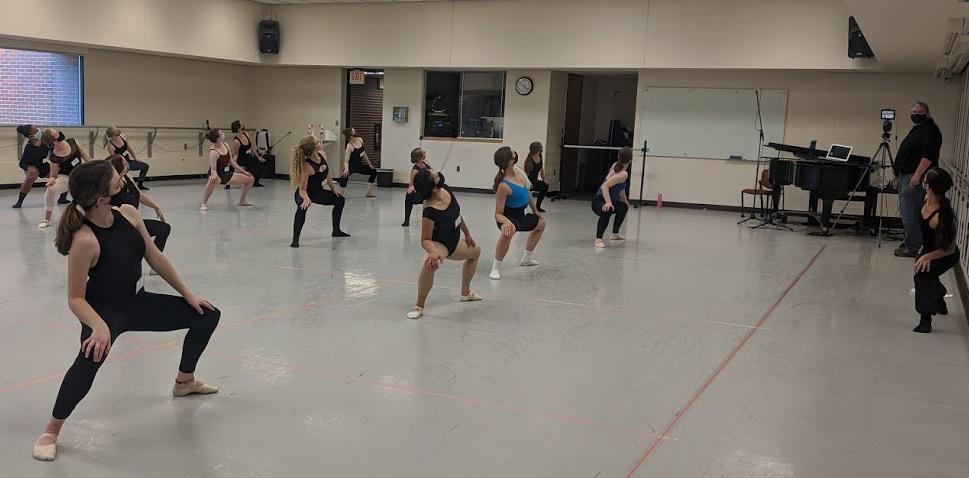
The use of the internet does not end at the choreography stage. Performances this semester will be virtual, in multiple ways. “For Student Dance Showcase we will be livestreaming for both of them, and they’ll both be in the Knickerbocker for that reason,” Farmer said. “For the H2 concert, we are doing essentially what Hamilton did over the summer. We’re doing a multi-camera shoot in the theatre and then editing it and uploading it for people to view.”
Farmer also shared that Strike Time Dance Theatre’s annual show that tours around to local elementary schools has changed formats. “Strike Time, insteading of touring to schools, is creating a children’s show, essentially like a PBS children’s special, and then they’re sending that,” Farmer said.
Formats for the spring semester shows have not yet been determined, as Farmer says they do not know what guidelines there will be at that time regarding audiences. As of now, all choreography done for any of the department’s shows this year must have the dancers spaced out six feet apart and there can be no partnering with dancers touching each other.
Despite all of these changes, morale in the Dance Department remains high. Farmer said that the students have absolutely risen to the challenges presented to them, just as he expected. “I had no doubt, because dancers always answer the call. That’s just what we do,” Farmer said.
Dancers cleaning a room after class A socially distant Dance 47 audition Valerie Dien Valerie DienSPORTS & WELLNESS Sports update: Changes on campus and beyond

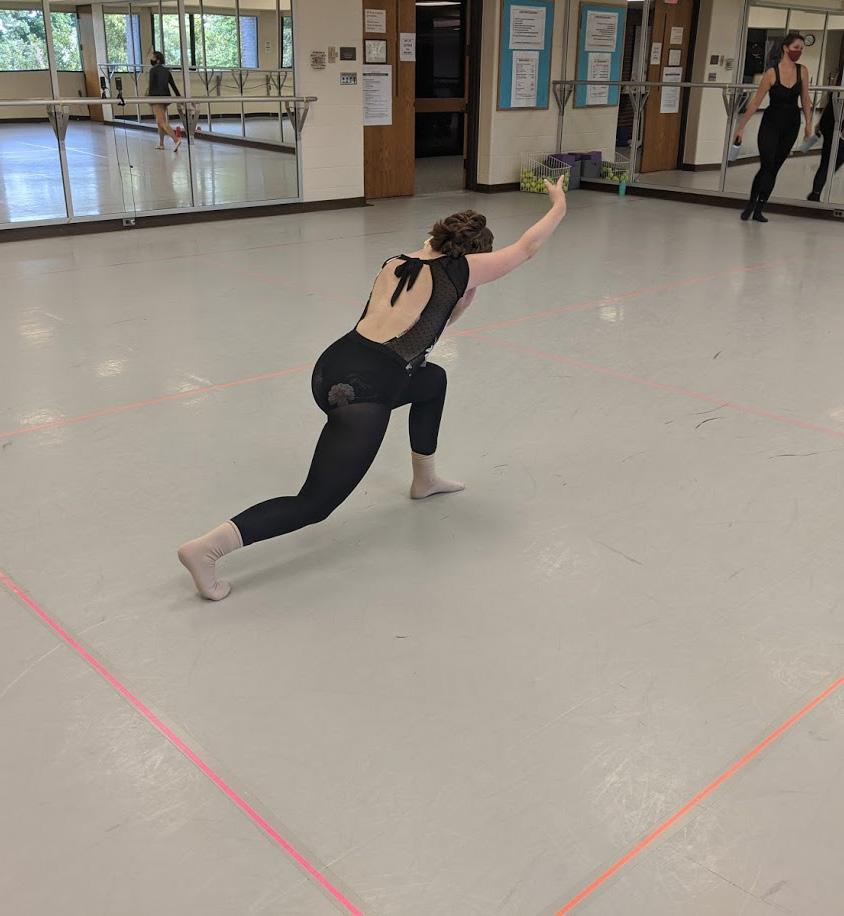
Student Athletes
While student athletes have not had the chance to excel at their craft, they have turned their energies to academics: congratulations to all 263 students who made the 20192020 Michigan Intercollegiate Athletic Association Honor Roll! This distinction is awarded to student athletes with a minimum GPA of 3.4 throughout the year. Senior students recognized for this award include: Mitchel Achien’g (indoor track and field, outdoor track and field) from Nairobi, Kenya/Kisumu; Megan Bigelow (soccer), from Flushing/ Flushing; David Bos (football), from Hudsonville/Unity Christian; Alicia Bostwick (cross country, indoor track and field, outdoor track and field), from Zionsville, Ind./Zionsville; Joey Dawson (cross country), from Richland/Gull Lake; Mason Dekker (football), from Holland/West Ottawa; Amanda Diaz (softball), from Mundelein, Ill./Mundelein; Rebecca Duran (cross country, indoor track and field, outdoor track and field), from Palatine, Ill./ Palatine; Carleigh Eidson (lacrosse), from Holland/West Ottawa; Addyson Gerig (indoor track and field, outdoor
track and field), from Holland/West Ottawa; Josh Izenbart (indoor track and field, outdoor track and field), from Glenwood, Ill./HomewoodFlossmoor; Emily Jackson (cross country, indoor track and field, outdoor track and field), from Grayling/Grayling; Emma Johnson (indoor track and field, outdoor track and field), from Wentzville, Missouri/ Timberland; Hannah Kenny (cross country, indoor track, outdoor track), from Grand Haven/Grand Haven; Danny Kroeze (tennis), from Holland/ Holland Christian; Nicole Kruithof (indoor track and field, outdoor track and field), from Byron Center/South Christian; Sarah McCoy (soccer), from Stevensville/Lake Michigan Catholic; Chelsea Miskelley (cross country, indoor track, outdoor track), from Holland/Black River; Paula Nolte (swimming), from Elmhurst, Ill./York; CJ Otteman (baseball) from Zeeland/Zeeland East; Andrew Pavey (lacrosse), from Grand Rapids/Forest Hills Eastern; Daniel Settecerri (golf), from Bloomfield Hills/Bloomfield Hills; Erica Slenk (swimming), from Zeeland/Holland Christian; Alison Sobkowski (swimming), from Portage/Portage; Marshall VanBelkum (lacrosse), from Rockford/Rockford; Jenna VanderLaan (volleyball), from Grand Rapids/South Christian; Matt VanDyken (baseball), from Zeeland/ Zeeland East; and Noah Weigle (golf), from Grandville/Grandville.
Intramurals
There are currently three intramurals planned for fall ‘20 at Hope: Partner Cornhole, Team Kickball, and Fitness Running Club. Additional activities Hope plans to add if and when state regulations allow include HORSE, Doubles Tennis and Badminton. Statewide Michigan and Michigan State were two of the schools involved in the decision by the Big Ten to potentially cancel the fall college football season, joining the Ivy Leagues in postponing any competition sports until 2021. Details are currently unclear as to whether the decision was made to completely cancel or delay the season, since coaches and schools have declined to comment. However, it is clear that many colleges are taking steps to protect the health of their student athletes, even at the cost of a competitive season.
Ashley Zardus demonstrating socially distant square use Post-class cleaning involves wiping barres, spraying and mopping the floor, and wiping down the door handles and any other surfaces that might have been touched or that dancers could have come into contact with Valerie Dien Valerie Dien